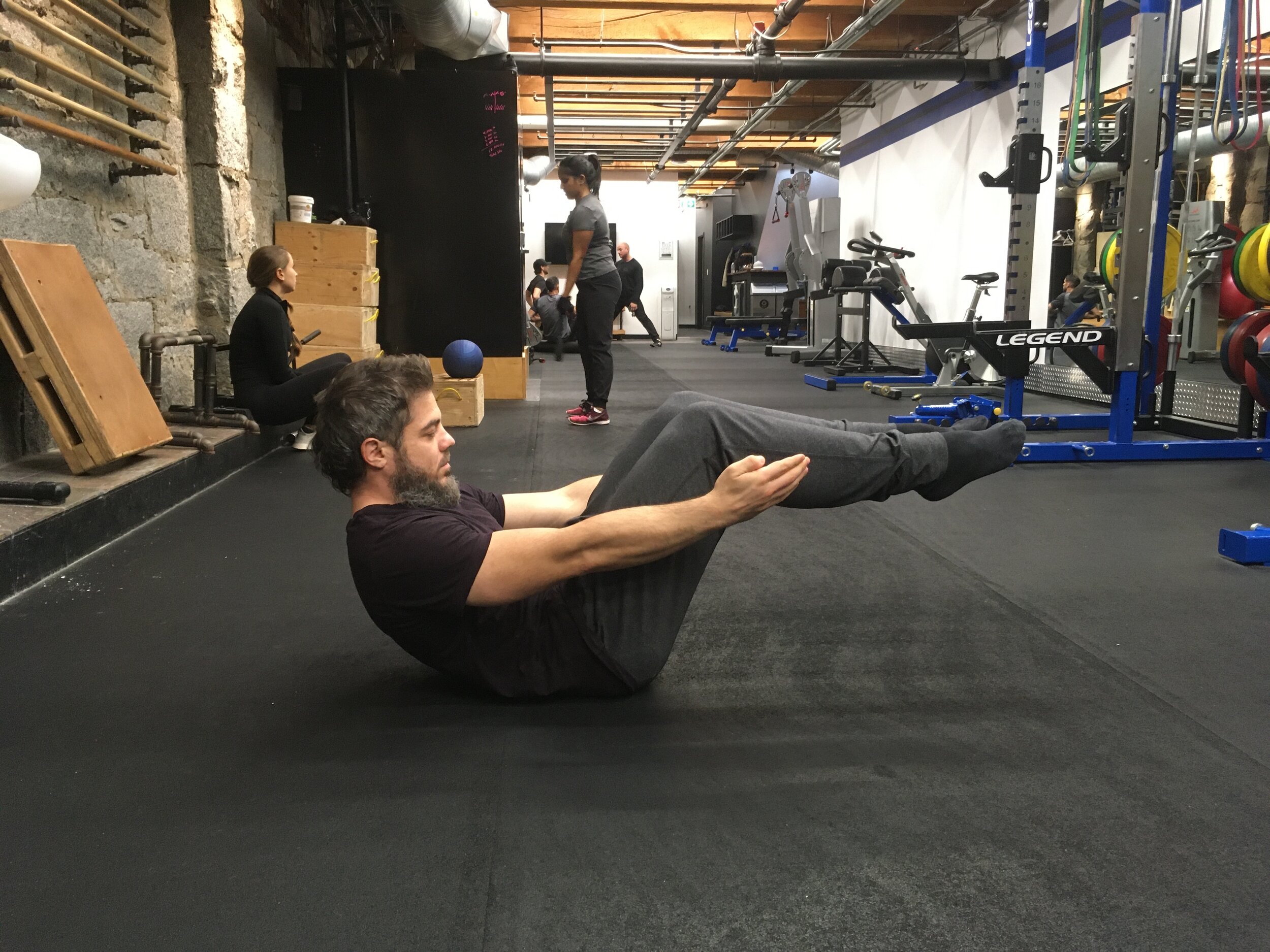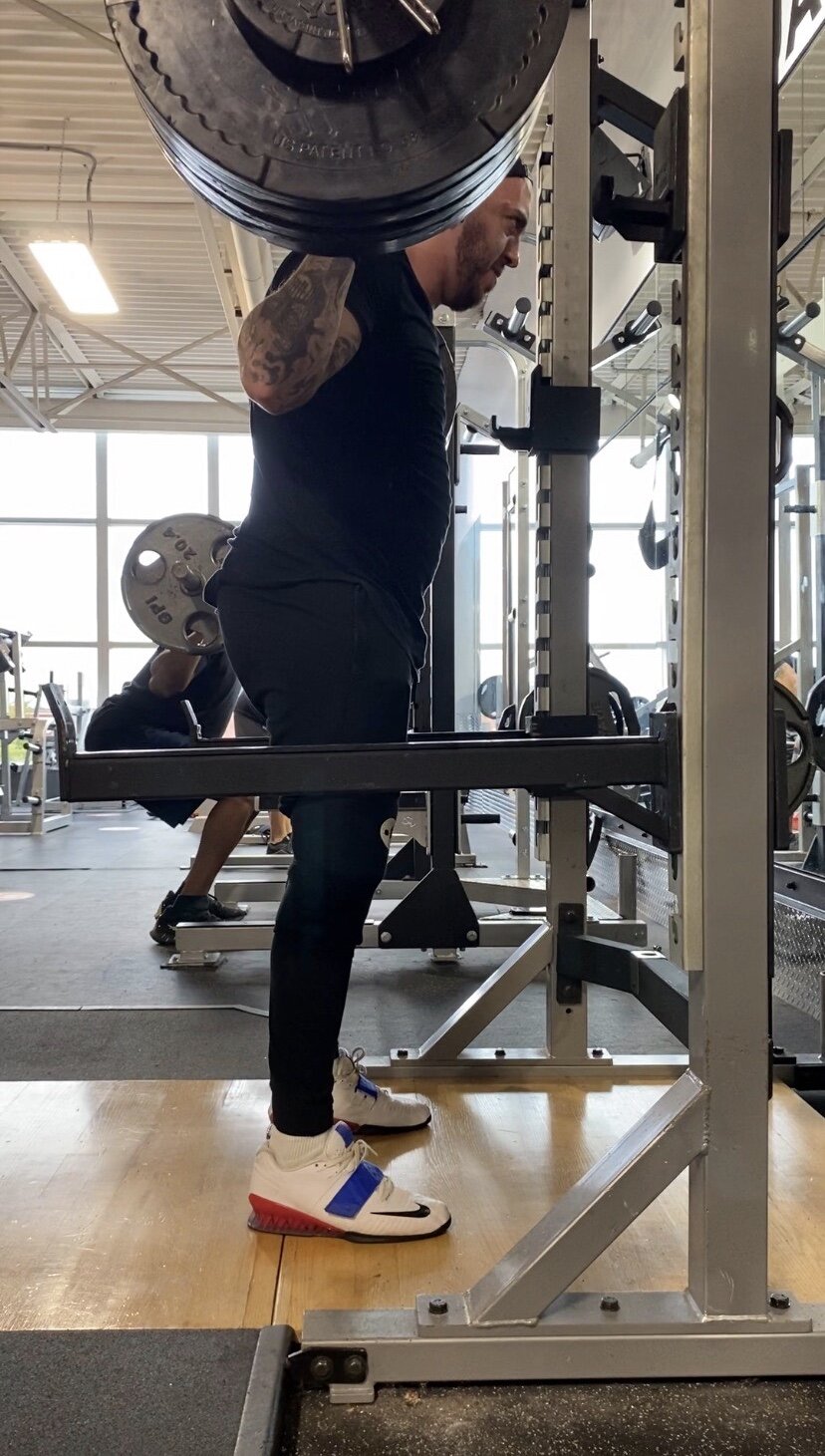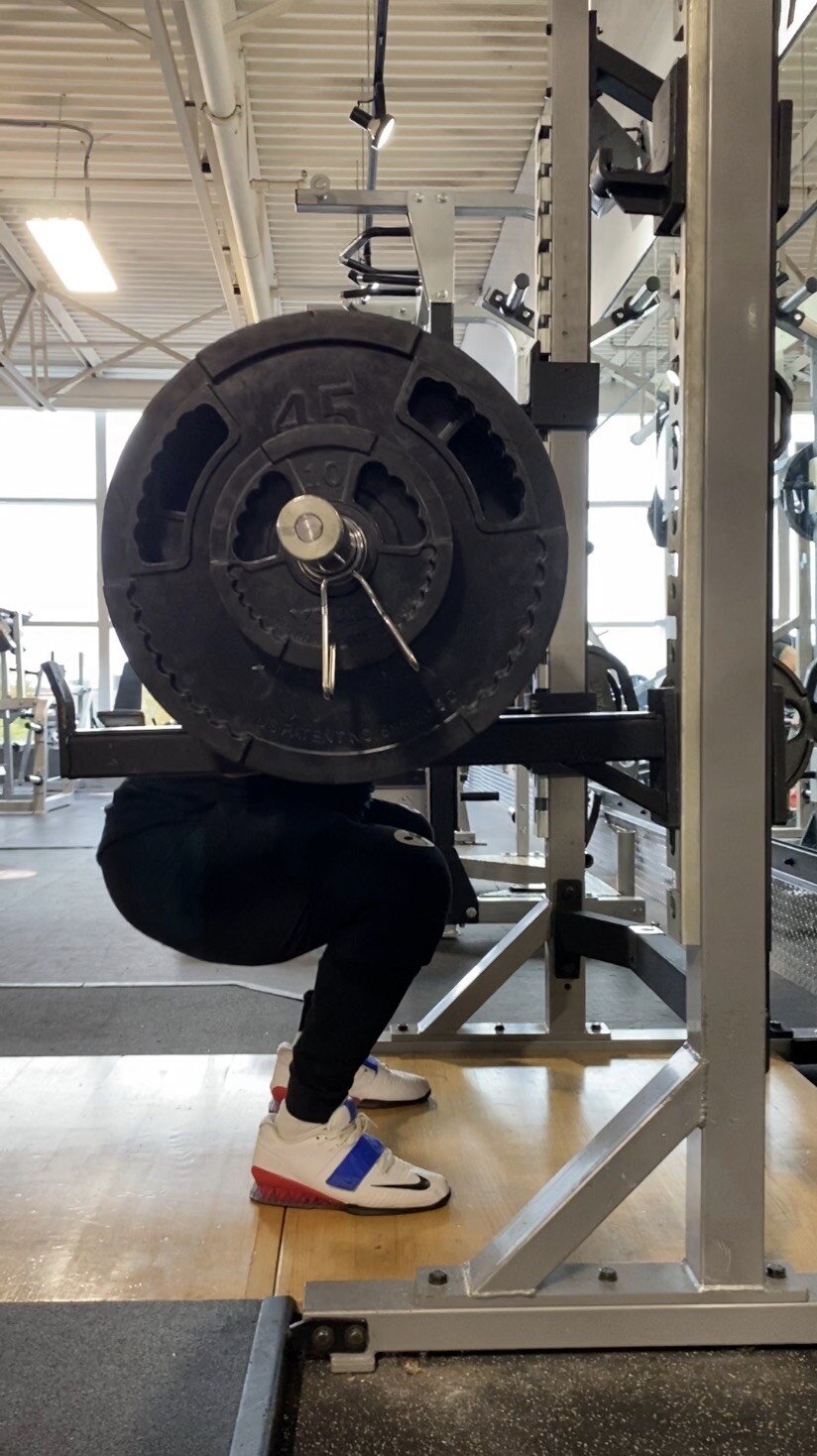Exercises for Spinal Health
In terms of exercises to promote spinal health, we are going to focus on a core strengthening series, with progressions, and a squat series. When completed with proper form the Core Stability Training for Injury Prevention and The Back Squat: A Proposed Assessment of Functional Deficits and technical factors that limit performance studies have found these types of exercises have been shown to decrease the risk of injury, increase athletic capability, and strengthen the musculature surrounding your spine.
Let’s first focus on the core. Substantial evidence from Core Stability Training for Injury Prevention demonstrates core muscle recruitment has positive alterations in low back pain (LBP) patients compared with healthy controls. The study, Use of a functional movement screening tool to determine injury risk in female collegiate athletes , found the “transversus abdominus and multifidus, both local stabilizer muscles, display changes in recruitment and morphology that limit their ability to effectively stabilize the spine and provide accurate proprioceptive information when not strengthened properly”.
The studies Inefficient Muscular Stabilization of the Lumbar Spine Associated with Low Back Pain: A Motor Control Evaluation of Transversus Abdominis and Delayed Postural Contraction of Transversus Abdominis in Low Back Pain Associated with Movement of the Lower Limb have found “all local stabilizer musculature and core musculature were recruited before any extremity movement (arms or legs), indicating that core muscles provide proximal stability for distal mobility. Core stability should be trained in a progressive fashion, beginning with local muscle recruitment, moving to core stabilization in a variety of postures, and then transitioning into total body dynamic movements”.
Photo #1: Beginner Hollow Hold with Harry from MoveMind.
Today we are going to start strengthening our core using the hollow hold series and the Copenhagen series.
Harry from MoveMind was kind enough to demonstrate beginner, intermediate, and advanced positions of hollow holds and Copenhagen holds.
Photo #1 is a beginner hollow hold position. Make sure you are cleared to start exercise and core work by your family doctor or Physiotherapist if you are recovering from an injury, or just starting into exercise.
Photo #2: Intermediate Hollow Hold with Harry from MoveMind.
Photo #3: Advanced Hollow Hold with Harry from MoveMind.
Photo #2 demonstrates an intermediate hollow hold position. Raising your arms higher and straightening one leg increase the difficulty of the hollow hold. If you are someone who exercises regularly you may want to start with the intermediate position.
Photo #3 demonstrates the advanced hollow hold position. Raising both arms over your head greatly increases the difficulty of the hold.
Photo #4: Beginner Copenhagen Hold with Harry from MoveMind
Photo #5: Intermediate Copenhagen Hold with Harry from MoveMind
Photo #4 demonstrates the beginner position of the Copenhagen series. This is very similar to the side plank position. It’s important to make sure that your hand is placed under your shoulder, squeeze your core and glutes tight, and think about lifting your hip towards the ceiling.
Photo #5 is the intermediate position of a Copenhagen hold. With the intermediate position the bottom leg is lifted off the ground increasing the difficulty of the hold. Same cues apply as in Photo #4: keep your glutes and core tight, and think about bringing your top hip towards the ceiling.
Photo #6: Advanced Copenhagen Hold with Harry from MoveMind
Photo #6 is the advanced position of a Copenhagen hold. Not only is the bottom leg lifted for added difficulty but the top leg is elevated on a bench or alternatively a box.
Photo #7: Light Good Mornings: Starting Position with Harry from MoveMind.
Moving on from core to the postural musculature of your back, good mornings are a great place to start. Start be completing this exercise with a dowel or an unweighted barell.
As with all exercises please focus on form over the amount of weight. With good mornings it’s vitally important that each participant hinges at their hips instead of having the movement come from a single segment of their vertebrae.
We are built to hinge at our hips. This is why we have big glute muscles on our backsides. We are not meant to repeatedly flex and round through a segment or two of vertebrae in our low back, especially under load. This is where form makes the difference between health and injury.
With this exercise think about your hips coming back first aka hinging at your hips.
Photo #8: Light Good Mornings: Ending Position with Harry from MoveMind
You can see in Photo #8 with the ending position that Harry maintains a neutral spine. He is not flexing or rounding through his low back while completing this motion.
Now, moving on to squats. Today we are going to look at loaded back squats, front squats, and then touch on deadlifts. Again, when these exercises are done with proper form they greatly benefit the musculature of your back and aid in increasing fundamental movement competency.
The study Fundamental Movement Skills in Children and Adolescents found “movement competency is essential for participation in physical activity and for mitigating the risk of injury, which are both key elements of health throughout life”. We want to stay as healthy, active, and independent for as long as possible.
The study The back squat: A Proposed Assessment of Functional Deficits and Technical Factors that Limit Performance found “the squat movement pattern is arguably one of the most primal and critical fundamental movements necessary to improve sport performance, to reduce injury risk and to support lifelong physical activity”. Based on current evidence (links to references below), the back squat an important foundational training exercise.
Kinetics of The Parallel Squat: Research Quarterly American Alliance for Health, Physical Education and Recreation note “the squat movement pattern is required for essential activities of daily living such as sitting, lifting, and most sporting activities. It is also a staple exercise in training regimens designed to enhance performance and to build injury resilience”.
Despite variations on how squat technique is instructed and executed to address specific performance goals, nearly all squat variations comprise a standard, basic, and fundamental blueprint that underlies the biomechanical technique that will support progressive physical attribute improvements and decrease the risk of training induced injuries.
Photo #9: Back Squat: Starting Position with Alex Eckmeier
Knee Biomechanics of the Dynamic Squat Exercise found “the back squat is widely regarded as one of the most effective exercises used to enhance athletic performance as it necessitates the coordinated interaction of numerous muscle groups and strengthens the prime movers needed to support explosive athletic movements such as jumping, running, and lifting”.
Alex Eckmeier in Photo #9 demonstrates the starting position of a high bar loaded back squat. There are numerous cues when setting up for a back squat. If this movement is new to you, it’s best to work with a trainer or Physiotherapist to make sure you are activating all the right muscles before descending. Squats are a very active movement, not passive.
Furthermore, back squat proficiency supports derivative squat movements that translate to many everyday tasks such as lifting and carrying heavy objects, which relates this exercise to improve quality of life.
Photo #10: Back Squat: Ending Position with Alex Eckmeier
Photo #10 demonstrates the bottom of the squat position aka being ‘in the hole’.
At this point your hips are bent ninety degrees compared to your shin bone. Some lifters squat deeper than ninety degrees but this requires greater ankle and hip mobility in order not to round through your low back at the bottom of the squat aka have a ‘wink’ at the bottom of your squat.
Again, this is where form trumps the amount of weight one is lifting.
According to Knee Biomechanics of the Dynamic Squat Exercise the “squat has also become more commonly used in clinical settings to strengthen lower-body musculature (especially posterior chain strength and recruitment patterns) with little to no harm on connective tissue after joint-related injury”.
You can think of the posterior chain as the muscles on the back of your body; calfs, hamstrings, glutes, and lumbar erectors to name a few.
Specifically, closed kinetic chain exercise (meaning your feet are in contact with a surface) are commonly used throughout the rehabilitation process to avoid excessive strain being placed on the anterior cruciate ligament (ACL), making the squat a favourable exercise for rehabilitation.
It is highly recommended that an individual is first able to demonstrate proficiency during body weight back squat performance before advancing to more intense variations and derivatives of squatting such as externally loaded squats and plyometric training.
Video #1 is a demonstration of Mel Babra completing a few loaded front squats with proper form. A front squat is a derivation of a back squat where the bar is held in front of the body in a ‘racked’ position. Not only do you get the lower body benefits of a squat but this front racked position also serves to strengthen the postural musculature of the thoracic spine.
Video #2 is a demonstration of Brendan Takata of Dynasty Weightlifting completing a few light deadlifts with proper form.
Again it is very important to hinge at your hips when completing these kind of lifts. Do not round through your low back to complete the motion.
So lots of information coming at you guys in this post. In terms of the amount of weight to use, corrections on form, and the amount of sets and repetitions to complete, it is always best to gather this information from a trained professional; your Crossfit coach, personal trainer, or Physiotherapist. Again make sure you are cleared to start these kinds of exercises is you are new to them or recovering from an injury.
If you have any questions, please contact us here.
References
Core Stability Training for Injury Prevention
Knee biomechanics of the dynamic squat exercise
Fundamental movement skills in children and adolescents
Use of a functional movement screening tool to determine injury risk in female collegiate athletes










